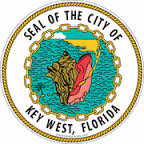Mesothelioma: The case of Key West, Florida
Posted on Wednesday, August 31st, 2016 at 2:46 pm
Mesothelioma: The case of Key West, Florida
 Key West is the southernmost city on the United States continent. The island of Key West, Sigsbee Park, Fleming Key, Sunset Key and part of Stock Island are encompassed as Key West. The island has been occupied since the sixteenth (16th) century. At the time it was a fishing and salvage village in the Spanish territory.
Key West is the southernmost city on the United States continent. The island of Key West, Sigsbee Park, Fleming Key, Sunset Key and part of Stock Island are encompassed as Key West. The island has been occupied since the sixteenth (16th) century. At the time it was a fishing and salvage village in the Spanish territory.
It has been considered to be the United States’ ‘Gibraltar’ and has been called the ‘Gibraltar of the West’. The reason Key West has been dubbed these titles is because of its strategic location on a ninety (90) mile wide, deep shipping lane called the Straits of Florida. These Straits lie between the Atlantic Ocean and the Gulf of Mexico, some ninety (90) miles from Cuba.
The island underwent some major developments and growth during the late nineteenth (19th) century. By 1889, it was said to be the largest and wealthiest city in Florida. The community of the island became connected to Florida mainland in 1912. This was accomplished through the extension of the Florida East Railway. However, a hurricane destroyed the railway link and a highway was constructed in its place.
As a result of the city’s island location, fresh water was a scarce commodity. This gave way to the establishment of pumping and distilling plants to source fresh water. One example of such a plant was the Key West Desalting Plant. However, the plants could not meet the demand of water for the area. This led to the construction of a water pipeline in 1941.
Asbestos exposure
The city’s extensive navy background (i.e. naval shipyards and navy stations) and construction industry sets the city in high risk of asbestos exposure. Job sites have been identified that harbor asbestos containing materials:
- City Electric Service
- Keys Energy Service
- Key West Naval Shipyard
- United States Naval Station
- Key West Power Plant